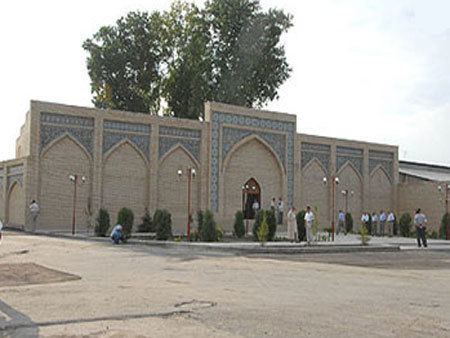Area 40.83 km² Population 197,000 (2009) | Local time Tuesday 1:47 PM Team FK Atlaschi | |
 | ||
Weather 14°C, Wind NW at 11 km/h, 46% Humidity | ||
Weaving silk road silk in margilan uzbekistan
Margilan (Uzbek: Marg‘ilon / Марғилон; Russian: Маргилан) is a city (2009 pop 197,000) in Fergana Region in eastern Uzbekistan. It is located at latitude 40°28' 16 N: longitude 71°43' 29 E. at an altitude of 487 meters.
Contents
- Weaving silk road silk in margilan uzbekistan
- Map of Margilan Uzbekistan
- Postcards from uzbekistan the vibrant colours of margilan silk
- Economy
- Main sights
- References
Map of Margilan, Uzbekistan
According to European legend, Margilan was founded by Alexander the Great. On a lunch stop, he was given chicken (murgh; in Persian مرغ) and bread (nan; in Persian نان), from which the town took its name. More reliable records indicate that Margilan was an important stop on the Silk Road by the 9th century AD, along the route going across the Alay Mountains to Kashgar.
Writing in the early 16th century, the founder of the Mughal dynasty, Babur, mentioned that “the pomegranates and apricots are superb .... the game in Margilan is good; white deer may be found nearby. The people are Sarts. They are a feisty people, ready with their fists. The custom of exorcism is widespread throughout Transoxiana, and most of the renowned exorcists of Samarkand and Bukhara are Margilanis. The author of the Hidaya (Burhan al-Din al-Marghinani) was from a Margilan village called Rishtan”. This reputation for toughness extends to modern times. Margilan merchants were key players in Central Asian commerce, and were said to be a law unto themselves during Soviet days, when Margilan was the heart of Uzbekistan’s black market. Margilan today is also a stronghold of conservative Islam.
Postcards from uzbekistan the vibrant colours of margilan silk
Economy
The town is the location of Uzbekistan’s largest traditional silk factory, the Yodgorlik Silk Factory. Employing over 2,000 workers, everything is done in the traditional manner, for an annual output of some 250,000 square meters of highly premium silk cloth
The neighboring Margilan Silk Factory employs 15,000 workers using modern machinery, and produces some 22 million square meters per year. It is uncertain when the secrets of silk production came to the Fergana Valley, but certainly, Margilan has been active in the industry since ancient times.
